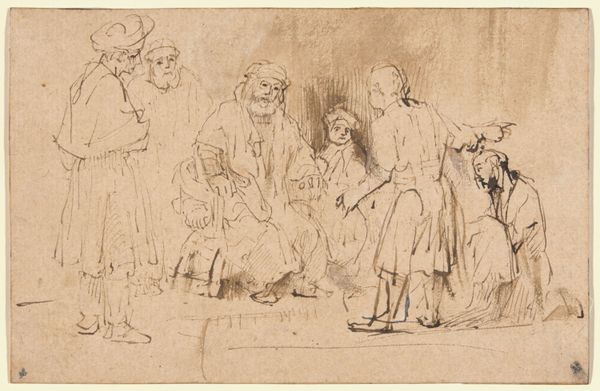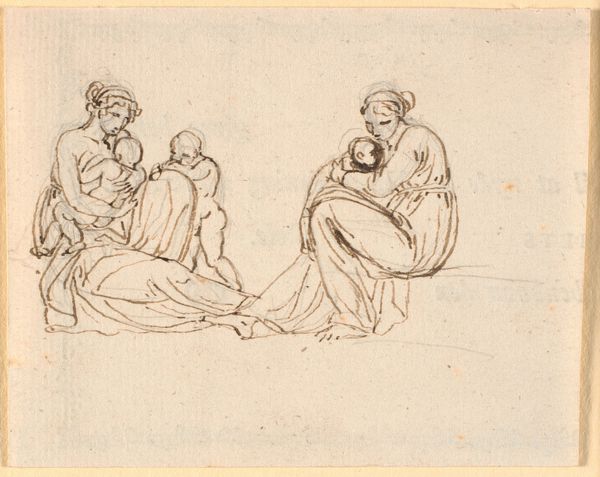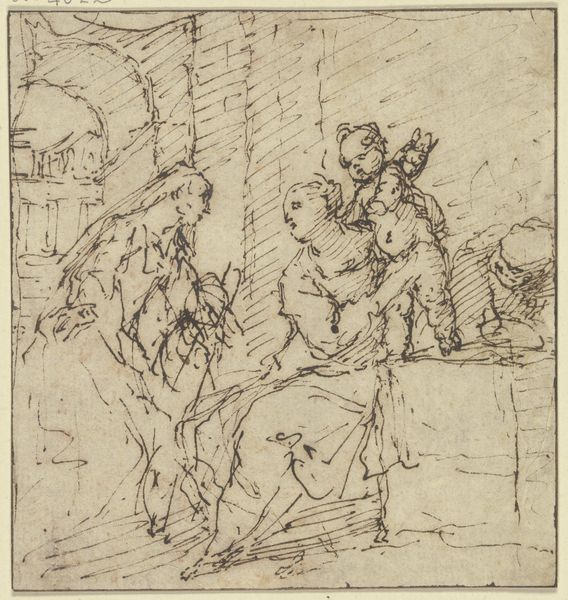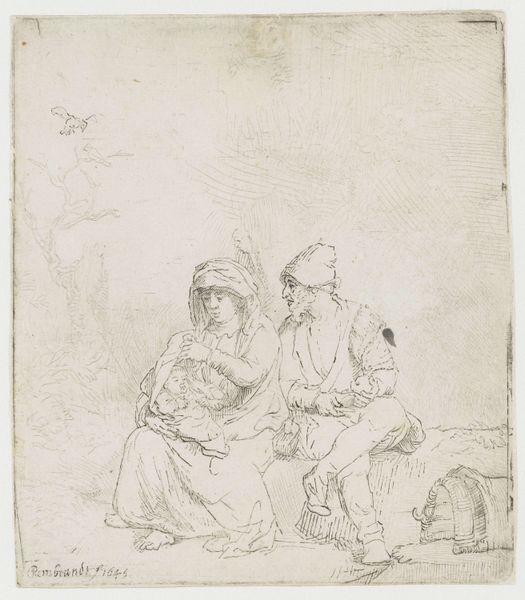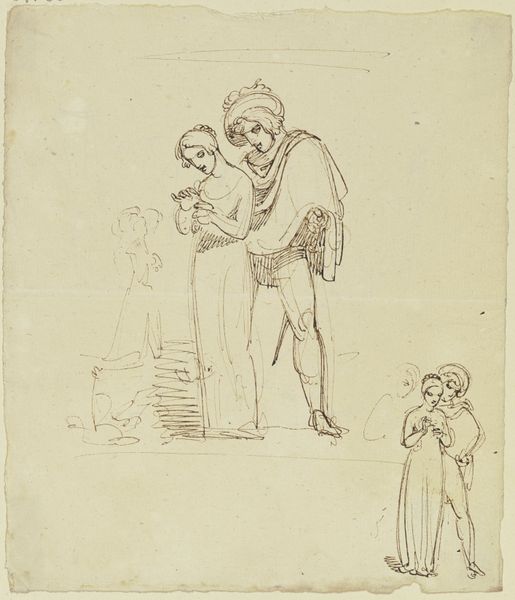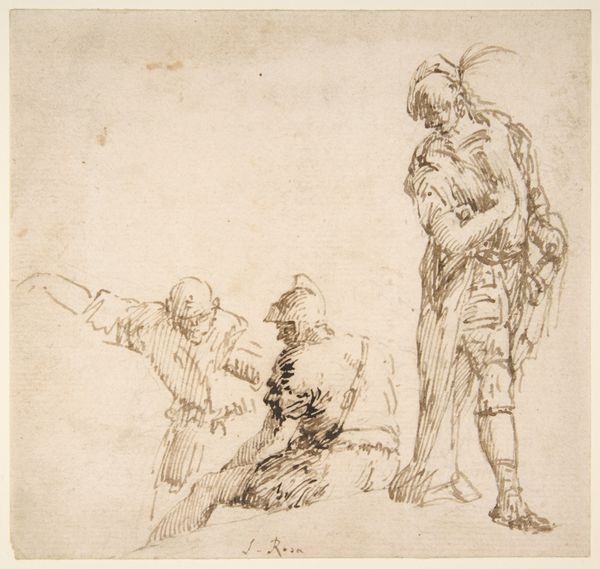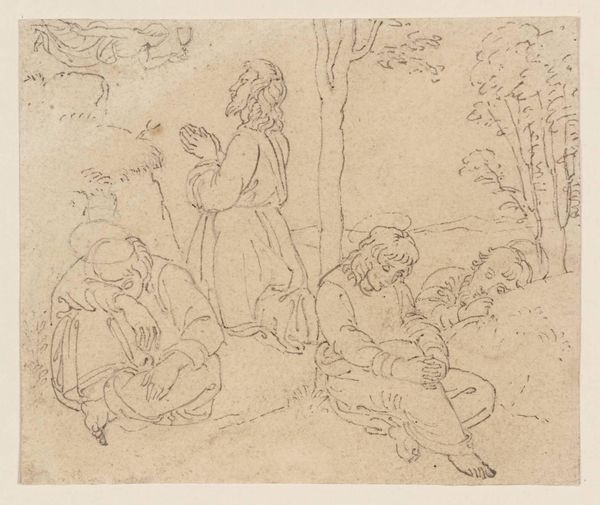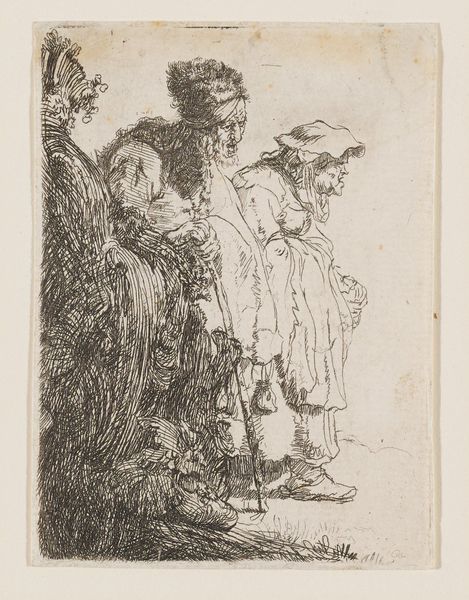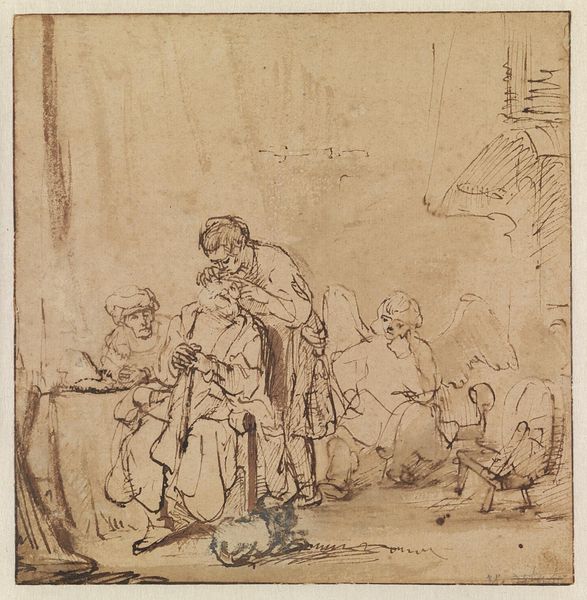
drawing, ink
#
drawing
#
narrative-art
#
baroque
#
figuration
#
ink
#
ink drawing experimentation
#
pen-ink sketch
#
sketchbook drawing
#
genre-painting
#
history-painting
Copyright: Public Domain: Artvee
Rembrandt van Rijn sketched "Joseph in Prison Interpreting the Dreams of Pharoah's Baker and Butler" with pen and brown ink, a moment pregnant with anticipation and divine revelation. Notice Joseph's raised hand, a gesture that transcends mere storytelling; it embodies the very act of prophecy. This hand, reminiscent of ancient orators and biblical figures, directs our attention and, in a way, seems to channel a higher power. Think of similar gestures across cultures—the pointing finger of John the Baptist, or even the raised hand of a classical philosopher, each invoking authority and truth. The act of interpretation itself, central to this image, is laden with psychological weight. Dreams, those elusive whispers of the subconscious, become a battleground for hope and fear. Rembrandt captures this tension, this moment of unveiling, with remarkable sensitivity. Consider how the act of dream interpretation has been depicted throughout history—from the oracles of Delphi to the psychoanalytic couches of Vienna—each instance revealing the human desire to penetrate the veil of the unknown. Such symbols echo through time, revealing our collective memory, our shared human experience of seeking meaning in the world.
Comments
No comments
Be the first to comment and join the conversation on the ultimate creative platform.

